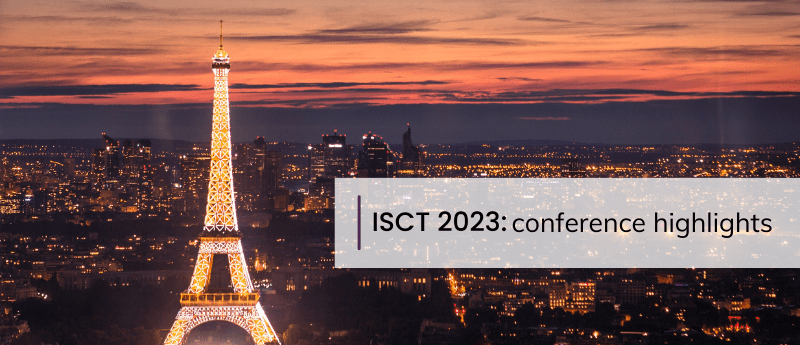ISCT 2023: conference highlights

The 2023 Annual Meeting of The International Society for Cell and Gene Therapy (ISCT; 31 May-3 June; Paris, France) brought together experts from every segment of the cell and gene therapy space, including academia, regulation and manufacturing, to explore and address the most critical issues in the field. This year, the conference had a headline theme of ‘celebrating the progress of advanced therapies and building the future through translation’, allowing us to look back at past successes and consider the solutions that will drive the translation of cell and gene therapies.
Our Journal Development Editor, Jasmine Hagan, and Digital Editor, Megan Giboney, have rounded up some of their favorite talks and roundtables from each day below!
Day one
Roundtable: Exosome Therapeutics – Are MSCs now Redundant?
This session, moderated by Daniel Gau (2 Bridge; Zoersel, Belgium), explored whether MSC-derived exosomes possess advantages over MSCs in terms of manufacturing, storage, logistics and regulation and whether these advantages make exosomes more valuable in specific therapeutic applications than MSCs.
Roundtable: Overcoming Barriers to iPSC Market Readiness: Part I
This roundtable, moderated by Julie Allickson (Mayo Clinic Center for Regenerative Biotherapeutics; MN, USA), was the first of a two-part series exploring how iPSCs can be brought from the bench to the bedside. Discussions focussed on how we can use a risk-based approach to ensure that iPSC-derived cell therapies can be manufactured at scale while ensuring consistent quality, safety and efficacy.
Day two
Plenary Session: Implementing New Technologies in Cell & Gene Therapy
Chaired by Rachele Ciccocioppo (University of Verona; Italy) and Giuseppe Orlando (Wake Forest School of Medicine; NC, USA) this session brought together speakers from Stanford University School of Medicine (CA, USA), Organamet Bio (NH, USA) and Capstan Therapeutics (CA, USA) to discuss some of the scientific innovations that are determining the future direction of the cell and gene therapy field. We heard about the future potential of therapeutic regulatory T-cells, bioengineered human hearts and in vivo CAR-T cell engineering.
Day three
Concurrent Session: Regulatory revolution – global harmonization for safe personalized medicines
We heard different perspectives on the direction that cell and gene therapy regulation needs to take in order to support global commercialization, focusing on the potential benefits of harmonization, such as reducing the need for duplicate clinical tests and reducing time to market. The panelists explored the feasibility of regulatory harmonization and discussed whether harmonization should even be considered the goal.
Day four
Exosome Translation Event: Unlocking the Potential of Exosomes – The Road to the Clinic
Over this half-day event we got an insight into the properties of extracellular vesicles that make them attractive for many therapeutic applications, the gaps in our understanding and the current challenges that are limiting their clinical translation. The event culminated in a panel discussion that investigated the potential solutions to the current obstacles in the field and looked to the future of extracellular vesicle-based therapeutics.